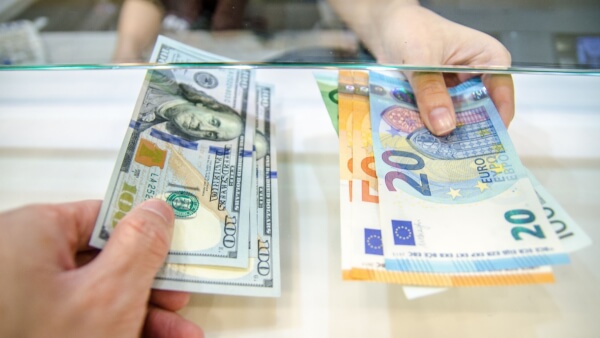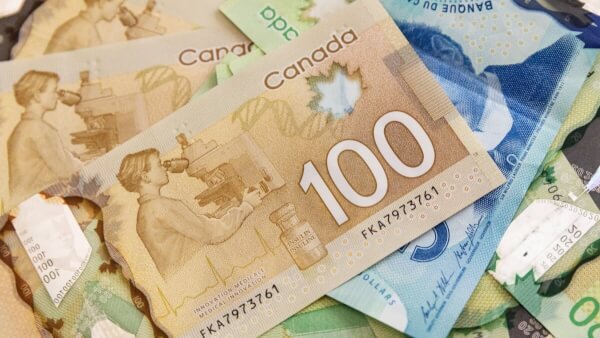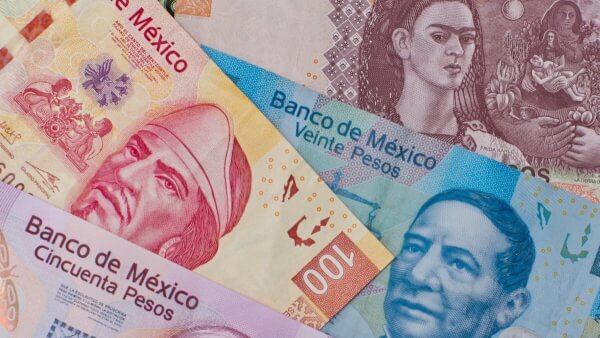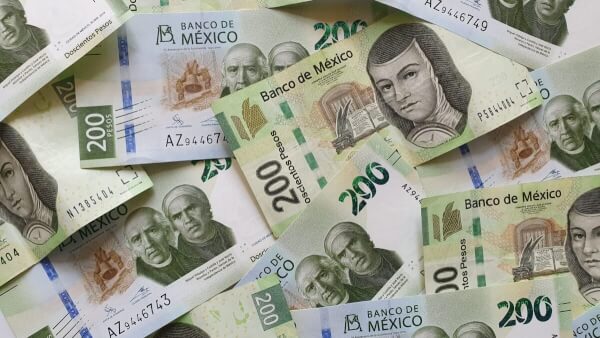What is the best place to exchange currency?
Going abroad and in need of foreign currency? In this article, we'll explore where to exchange currency - from good deals to the places you should avoid.

No matter where you’re going, if you’re planning a trip or vacation abroad it’s going to cost you. It’s a good idea to think in advance about the best way to pay your way while you’re travelling.
Maybe you’re considering relying on your Visa card because you don’t want to be walking around with a pocketful of unfamiliar cash. It’s a smart choice. Using debit or credit cards abroad is often the most convenient and safe option. But there are fees and charges you need to know about before you go. It’s well worth understanding and avoiding some of the common pitfalls, so you can make sure your money goes further.
Read this guide to find out:
You can use your U.S. Visa card abroad to make purchases or withdraw cash. To withdraw cash from an ATM, you’ll need to know your four digit PIN number.
It’s also helpful to know that most credit and debit cards used in Europe, Canada and Australia will have ‘chip and PIN’ technology. You’ll find everyday purchases much easier if your card has this already. If you have a magnetic stripe card, then retailers and restaurants can process a transaction by swiping the strip. You’ll then be asked for your signature instead of a PIN. However, staff might not be familiar with this process, as it’s seldomly used. Visa actually insists that magnetic swipe cards should be accepted wherever the Visa sign is displayed, so if you come across someone who doesn’t think your card will work, ask them to try it. The payment terminal will then guide them through the steps needed.
It also may be worth noting that in most places in Europe, waiters will bring a card terminal directly to you and charge the entire transaction in your presence. It would be considered a faux pas to take the card out of your sight.
Vending machines and automatic payment services for travel tickets or gas won’t work with a magnetic stripe card. However, you should usually be able to find a staff member to process your transaction if you’re at a gas station or buying a train ticket for example.
Another difference is that contactless payment technology - which allows you to simply ‘tap and go’ - is very popular in Europe, Canada and Australia. Although it hasn’t really caught on in much of the U.S., likely you’ll be seeing it happen more and more in the future. If you have a contactless card already, then you can use it just the same as you do at home. You just need to check that the retailer has the contactless symbol displayed. Some countries, however, haven’t yet adopted contactless technology so you may be out of luck.
Overall, despite a few quirks, you should have no problem paying with your Visa card abroad. Bear in mind, however, there may be additional fees to pay when you use your card overseas. It’s also worth remembering cash is still the main form of payment in some countries. Do some research if you’re heading on vacation somewhere off the beaten track, as taking some cash with you might be a sensible idea, too.
Whether you choose to spend abroad using your debit or credit card, you’re going to incur some fees.
Firstly, the bank will apply the daily exchange rate set by Visa, to convert your purchase into U.S. Dollars (USD). Usually you’ll find that this is slightly less favourable than the real exchange rate you find on Google. But you’re a valued customer, so these exchange rates are generally pretty fair if you’re being charged in the country’s local currency. On the other hand, if you’re charged in USD under something called Dynamic Currency Conversion (DCC), you can run into exorbitant mark-ups. But more on that later.
On top of any exchange rate mark-ups, many card providers will then deduct a further cut for themselves. This is known as a foreign transaction fee. Usually this is a percentage of the amount you spent.
If you’re taking cash out of an ATM, there may also be further charges to pay. Sometimes this is a further percentage added onto the foreign transaction fees you’ve already paid, sometimes it’s a fixed amount per withdrawal. This is important to understand, as taking out larger chunks of cash might be better if you have a fixed fee per withdrawal.
It’s also worth reading the fine print, as some individual banks or ATM providers might levy their own fees on top of your bank charges.
You might also be asked if you want your purchase to be processed in USD instead of the local currency of the country. This is something sold to customers as a service, and known as Dynamic Currency Conversion (DCC). It sounds super convenient, but don’t be fooled. It should most definitely be avoided.
DCC can be applied nearly anywhere your card is accepted overseas. You might be asked at an ATM, restaurant or store if you’d like to pay in dollars. If possible, choose to pay in the local currency. That’s because the foreign currency exchange rates applied when using DCC are never as good as those your card provider gives. You’re basically giving the local company or ATM machine permission to use its own, mostly poor, exchange rates.
Your bank has an interest in ensuring you’re happy with their services. A foreign provider has no such obligation, so has no problem marking up an exchange rate and pocketing the difference.
If you’re covering your vacation spending with a credit card, the process will be similar. But don’t forget to take into account any interest charges you’ll incur if you don’t pay your bill at the end of the month. Some credit cards do come with promotional offers. Which mean that you’ll have a grace period during which your purchases are interest-free. If this is the case, you might pay less overall.
The exact fees you’re liable for will be detailed online or on the back of your card statements. The fees below are a guide, as different card types might have some variances, including promotions and opening offers which improve the rates available.
Here are the fees you’ll be charged to use your U.S. Visa card while you’re away, from some of the popular card-issuing banks:
| Bank of America | Citi | Capital One | Wells Fargo | |
|---|---|---|---|---|
| Standard foreign transaction fee | 3% | 3% | 0% | 3% |
| ATM Usage Foreign Cash Fee/ Cash Fee | No extra fee if using an ATM with the Visa/Plus symbol. Outside this network, the ATM administrator decides the fee. | Depends on the card chosen. Some cards will be fee-free in the Citi ATM network. | Depends on the card chosen. | $2.50 - $5 Depends on the ATM used. |
Visa has a handy online tool to help you work out what you’ll actually be charged on a day-to-day basis if you make purchases abroad. For example, if you spend €100 hitting the sales during your weekend trip to Madrid and use your U.S. Visa card, the exchange rate taking into account the foreign transaction fee charged by your card provider, in this case 3%, could have looked like this:
Using this rate, you can see that the final bill totalled $118.36. The currency exchange rate used will fluctuate, of course, so it’s worth checking the online tools regularly.
Nobody wants it to happen, but it’s worth thinking about how you’ll cope if your card is lost or stolen when you’re on your vacation.
If you lose your card when you’re abroad, you’ll have to contact your card issuer to report the loss. They’ll cancel the card and, depending on their policy, may be able to issue you a temporary card or some emergency funds to make sure you survive while you’re away.
You’ll find the number to call on your statement, online or on the back of your card - so make a note and keep it separate to your card during your travels. You can find contact numbers and forms for some of the main Visa card issuers here:
You can also get card protection insurance which could offer additional help if your card is lost or stolen while you’re abroad. However, this will come at a fee. Card protection can be arranged through your bank or an insurance company. If you do take this additional protection, make sure you have all your policy details with you when you travel.
Your personal preferences and spending habits will dictate whether it’s best to use a debit or credit card abroad. As the deals vary so wildly depending on which bank or card issuer you use, it’ll also depend on the deal you’ve got on your preferred card.
Using a debit card is often better if you intend to mainly pay using your card, or take cash from ATMs in your card’s network. Larger card issuers are part of ATM networks, working with partner banks in different countries. In this case you can benefit from reduced fees, or even no fees at all if you use specific ATMs. It’s well worth finding out which ATMs are free to use overseas before you travel - otherwise you’ll be hit by hefty costs.
If you need to spread the cost of your vacation over time, a credit card might suit better, as it allows you to do this. Choose the right card, and you could also get cash-back or rewards to help you travel more in future. Be warned, though, you may incur additional interest costs if you don’t pay your bills immediately. Taking cash withdrawals on a credit card is usually not a good idea either, as many banks start to charge interest immediately on these transactions rather than offering any grace period.
Spending on a credit card can also provide greater security than using cash, as your purchases are monitored and you should be able to get help if you’re the victim of fraud. To get the most out of this, you should keep all your receipts and check your card statements thoroughly. If you have a premium card, you might also be able to access other support and offers, like free upgrades or help if you have an emergency while you’re away.
1. Tell your bank you're going abroad
Visa advise that you tell your bank if you’re travelling abroad. However, many banks no longer insist on this step, so check with your local branch or online. It probably is worth letting your card issuer know if you plan to be away for a large chunk of time.
2. Make sure your bank has your contact details
One thing you must do, is make sure your bank has your correct contact details. You can check the phone number they have by calling into a branch or logging into your account online. If the bank systems detect anything that might be fraud, this is the number they’ll use to get hold of you. If it’s wrong or you’ve got your phone turned off while you’re travelling, your account activity might be limited while they make further checks and try to get hold of you. You’re more likely to have problems if you’re travelling to someplace unusual. If your destination is somewhere tourists rarely go, or is a hotspot for fraud, then it’s especially important to make sure your details are all up to date.
3. Take a backup card
Wherever you go, it’s well worth having a secondary bank card just in case there’s a problem with your usual card. Although carrying too much cash in your pockets isn’t advisable, keeping a small amount of local money is smart, in case you find your card isn’t accepted.
4. Keep track of your spending overseas
One of the biggest financial pitfalls is accidentally overspending while away because you lose track of the costs in another currency. Even without the complication of currency conversion, we all know it can be tough to keep track of your spending when you’re on vacation. To avoid this, you might want to try an app to monitor and manage your cash flow while you’re away. Setting a daily spending limit is another way to help make sure you don’t have any nasty surprises once your vacation is over.
Your vacation is no time to worry about money. Use these tips to stay safe while you spend abroad, and make sure you know what fees and charges you need to plan for. Then all you have to do is relax and enjoy!
*Please see terms of use and product availability for your region or visit Wise fees and pricing for the most up to date pricing and fee information.
This publication is provided for general information purposes and does not constitute legal, tax or other professional advice from Wise Payments Limited or its subsidiaries and its affiliates, and it is not intended as a substitute for obtaining advice from a financial advisor or any other professional.
We make no representations, warranties or guarantees, whether expressed or implied, that the content in the publication is accurate, complete or up to date.

Going abroad and in need of foreign currency? In this article, we'll explore where to exchange currency - from good deals to the places you should avoid.

You're all set for your trip abroad, and the question comes up: where can I exchange foreign currency? In this article, we'll go through all the options & tips.

Heading abroad? Here’s everything you need to know about ordering Canadian dollars in the US.

Heading abroad? Here’s everything you need to know about ordering pesos with Chase bank.

Heading abroad? Here’s everything you need to know about ordering pesos with Wells Fargo.

Heading abroad? Here’s everything you need to know about ordering euros with Bank of America.